In the heart of Florence, over the Ponte Vecchio, since 1565 a hidden path links two important buildings of the city. I am talking about the Vasari Corridor, one of the most exclusive places in Florence and of all Tuscany.
Closed off to mass tourism, I have always been attracted to and keen to visit it. Thanks to the tour guides of Artemide, a Florentine cultural association, I realized my little dream of walking along the Vasari Corridor. I was so excited thinking about going back in history to the time of the Medici Family and crossing the Arno River by this unusual passage, hidden from the rest of the tourists.
Reopening Day after renovations: Updates
We have good news about the reopening. On 11 October 2023, the director of the Uffizi Galleries, Eike Schmidt announced a possible date for the inauguration of the Vasari Corridor. After the upgrading and refitting the Corridoio Vasariano should reopen in May 2024, on the anniversary of the Georgofili massacre that occurred on the night of May 26-27, 1993. Stay tuned for further updates.
When it reopens, the Vasari Corridor will open to anyone all year round from Tuesday to Sunday. Mondays are the closure days for the Italian public museums. At the moment, the Corridor is closed to the public and under maintenance to prepare this unique place in Florence for the great opening. You will need to book in advance for your visit by buying a ticket that costs 45 euros during the high season and 20 euros in the low season. The Management of Uffizi is thinking of creating a special XXL pass that allows tourists to visit Palazzo Vecchio, the Uffizi, Vasari Corridor, Palazzo Pitti, Boboli Gardens, the Forte Belvedere, and Giardino Bardini.
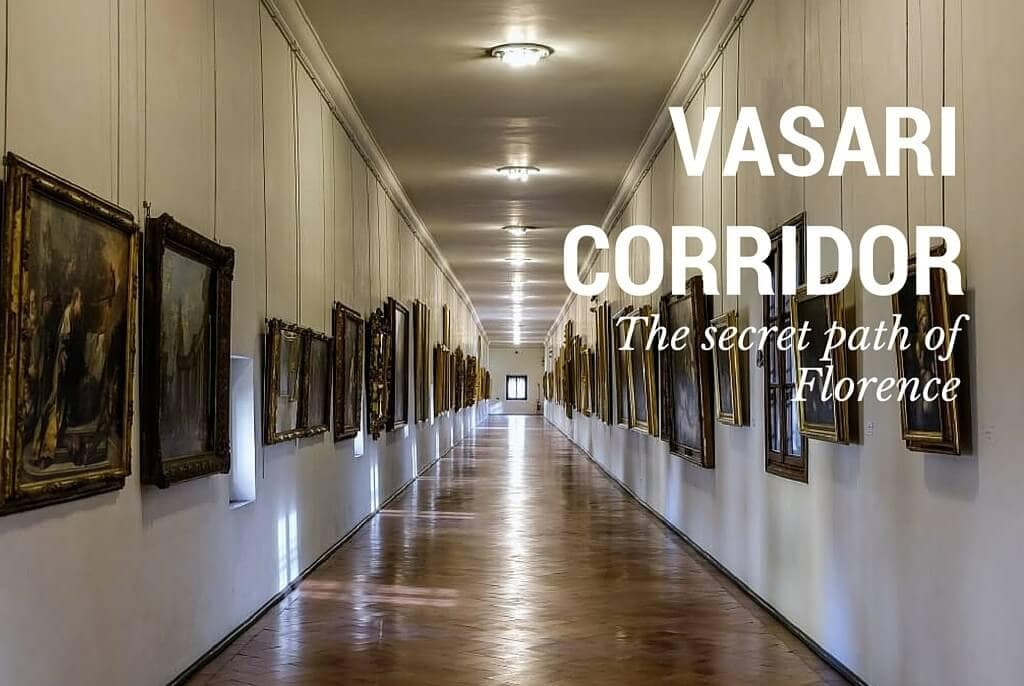
Vasari Corridor, the secret passage in the heart of Florence
The Vasari Corridor is an elevated passageway of about 1 km / 0.62 miles in length, connecting Palazzo Vecchio to Palazzo Pitti on the opposite bank of the river.
The corridor starts from the current Town Hall, passes through the Uffizi Museum, and along the Lungarno Archibusieri. From there, it turns left crossing the river over the Ponte Vecchio, and goes around the Torre del Mannelli.
Once reached the Oltrarno district, it keeps going inside the church of Santa Felicita and into Palazzo Guicciardini, to end its run in two different places: into the Boboli Garden and inside Palazzo Pitti.
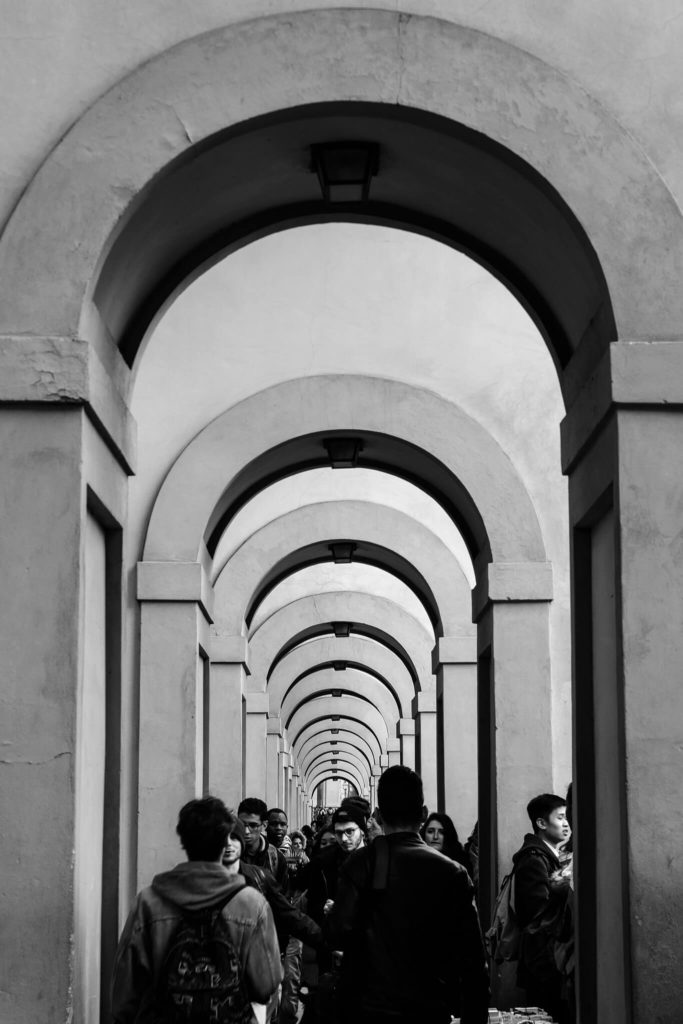
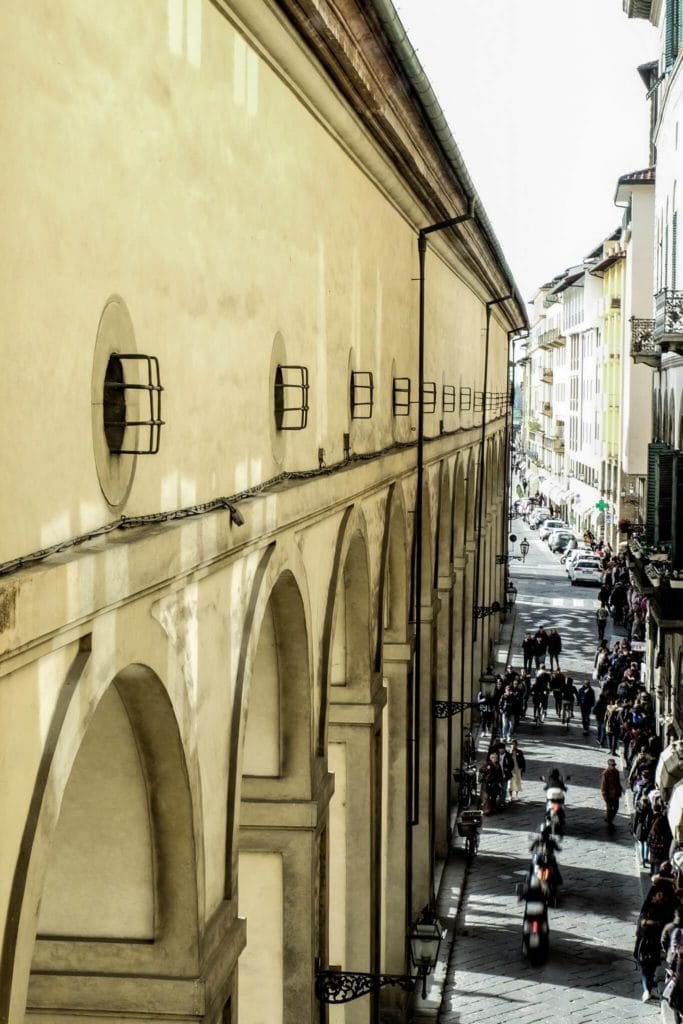
My experience on the Vasari Corridor
The tour begins from the second floor of the Uffizi with a short brief about the history of the building. We walked for a while inside the gallery to reach the entrance of the corridor where a keeper was waiting for us to open the door. Under the curious gaze of the other visitors, we entered this secret passageway, leaving behind us the noise and chatter of the gallery. Only silence and history surrounded us.
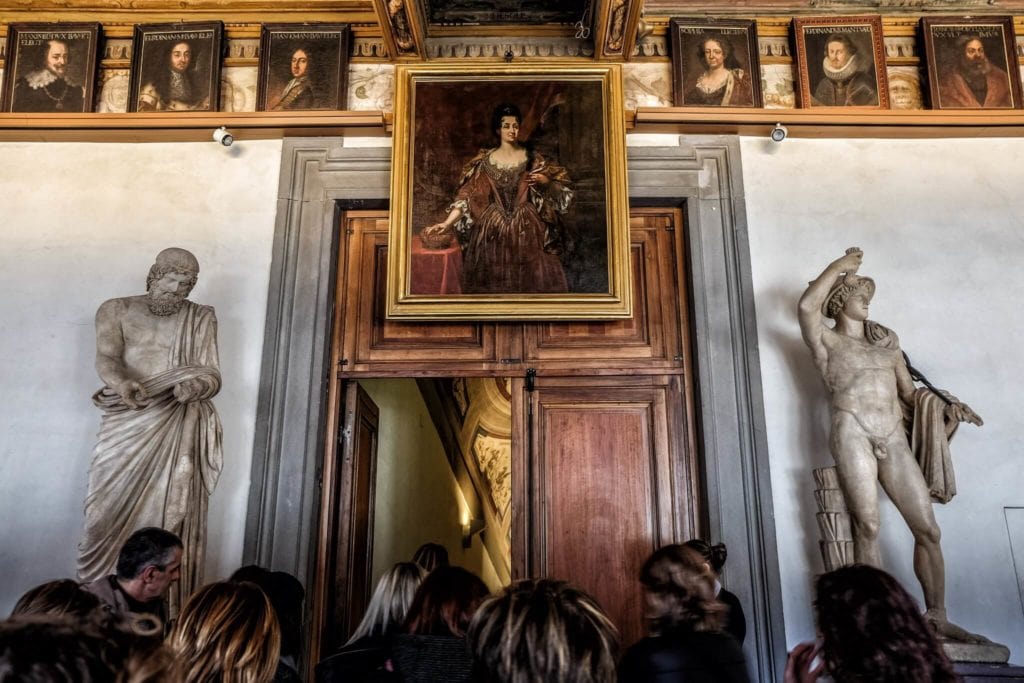
Lavinia, our experienced and smiling tour guide, drove us along the corridor showing the most important paintings and telling dozens of curious and fascinating stories about this incredible place.
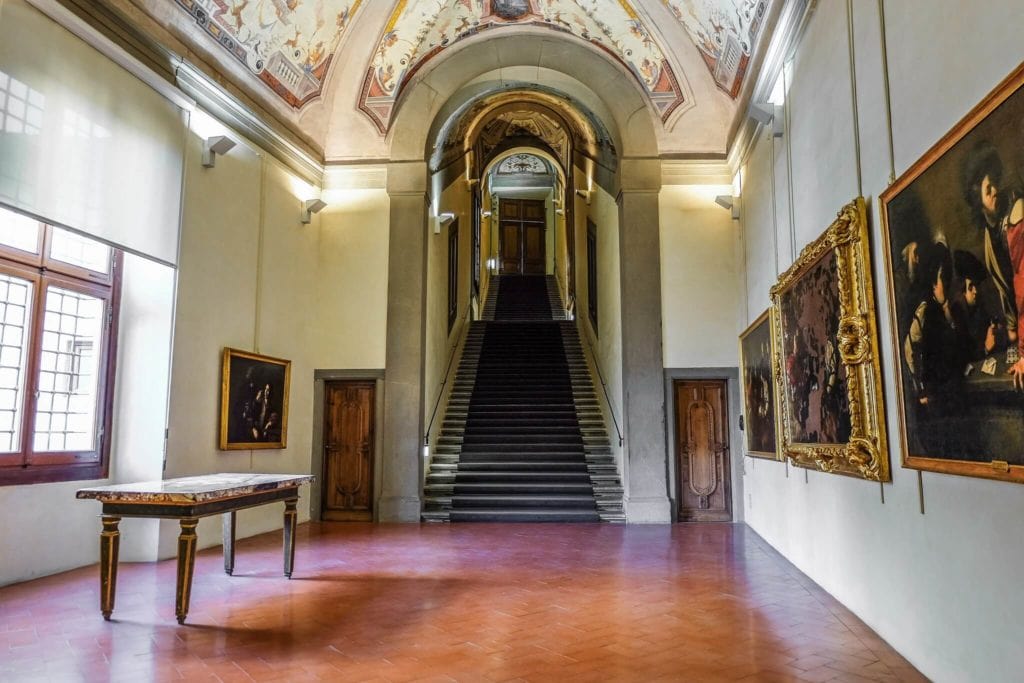
The reason behind the creation of the Vasari Corridor
In 1565, Duke Cosimo I de Medici, on the occasion of the marriage of his son Francesco I with the Princess Johanna of Austria, commissioned the building of the corridor to the famous architect Giorgio Vasari. The construction began in March 1565 to end in November. It took only eight months (even if the Vasari proudly said they were five), in time for the celebration of the wedding on the 16th of December of the same year.
The Vasari Corridor was needed to allow the regnant Medici Family to easily and safely move from their residence in Palazzo Pitti to the government offices in Palazzo Vecchio, without using security guards. They could even attend to the Holy Mass of Santa Felicita church without mixing up with the people. In fact, the corridor has access to a private balcony overlooking the inside of the church.
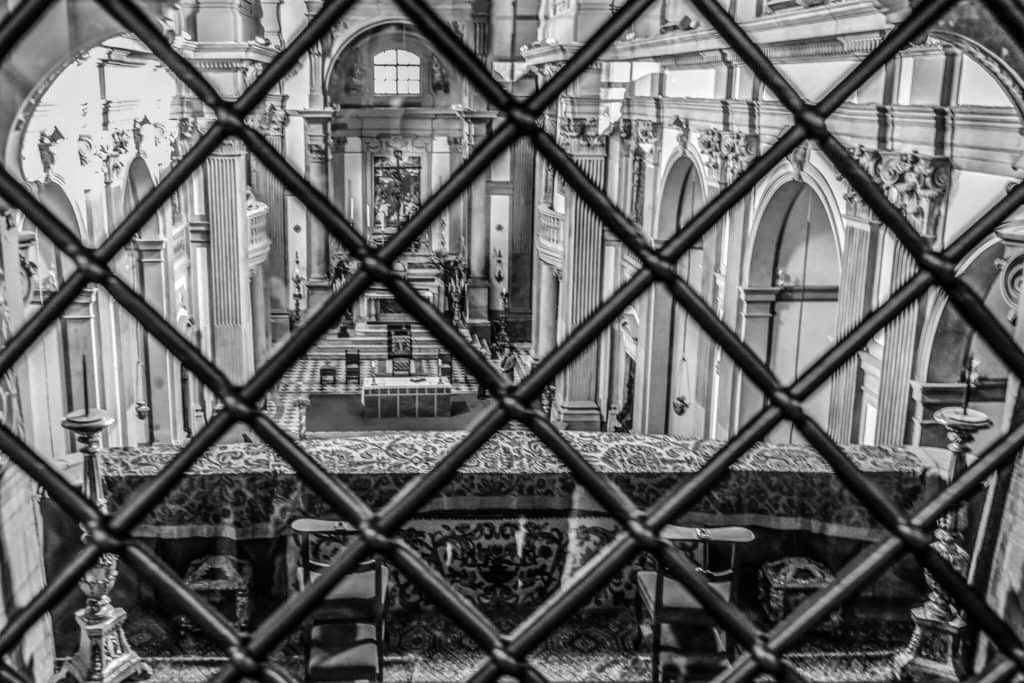
Other curiosities about the Vasari Corridor
The Meat Market on Ponte Vecchio
In origin, Ponte Vecchio hosted the meat market. But after the building of the Corridor, they moved it away and replaced by the goldsmith shops we still find nowadays. Can you guess why? Because the Duke did not want the nauseating smell of meat could reach the corridor.
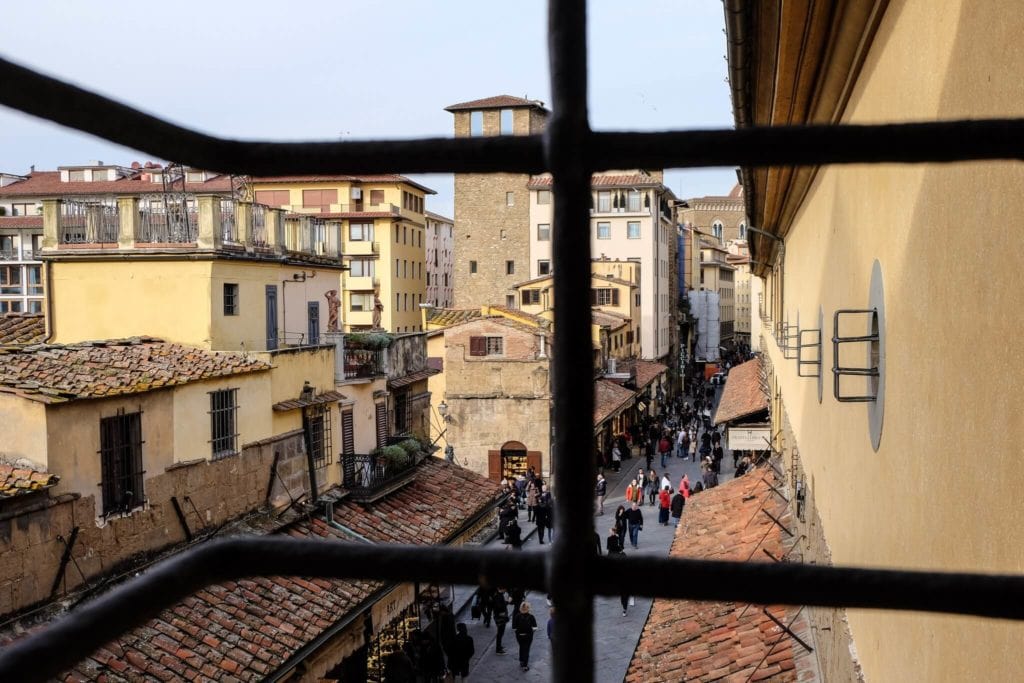
The need to show the greatness of the de Medici family
In front of a painting of Villa Medici in Rome, we heard about the story of Ferdinando I de Medici. He was the Cardinal of the Roman Catholic Church. But he was forced to come back to Rome and Florence to continue the dynasty of the Medici. So, in 1588 he decided to use the Vasari Corridor also as a boast of the Family. The Medici loved to impress the illustrious visitors of Florence showing them the corridor and its artworks, as a symbol of the grandeur of the new dynasty.
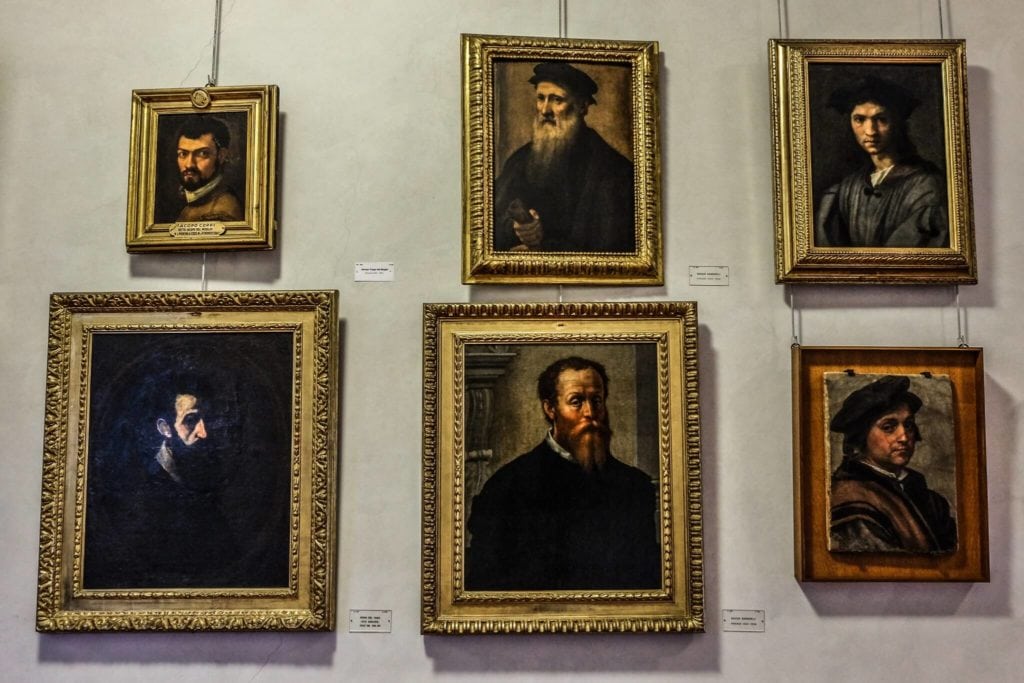
The world’s greatest collections of self-portraits
The Vasari Corridor today houses about 1600 of the world’s greatest collections of self-portraits, collected over centuries. The credit for this heritage goes to the cardinal Leopoldo de’ Medici. He was a great enthusiast collector, and in 1664 began to decorate the corridor with drawings, paintings, statues, and self-portraits.
Today, hundreds of paintings from the seventeenth to the nineteenth century cover the walls of the corridor.
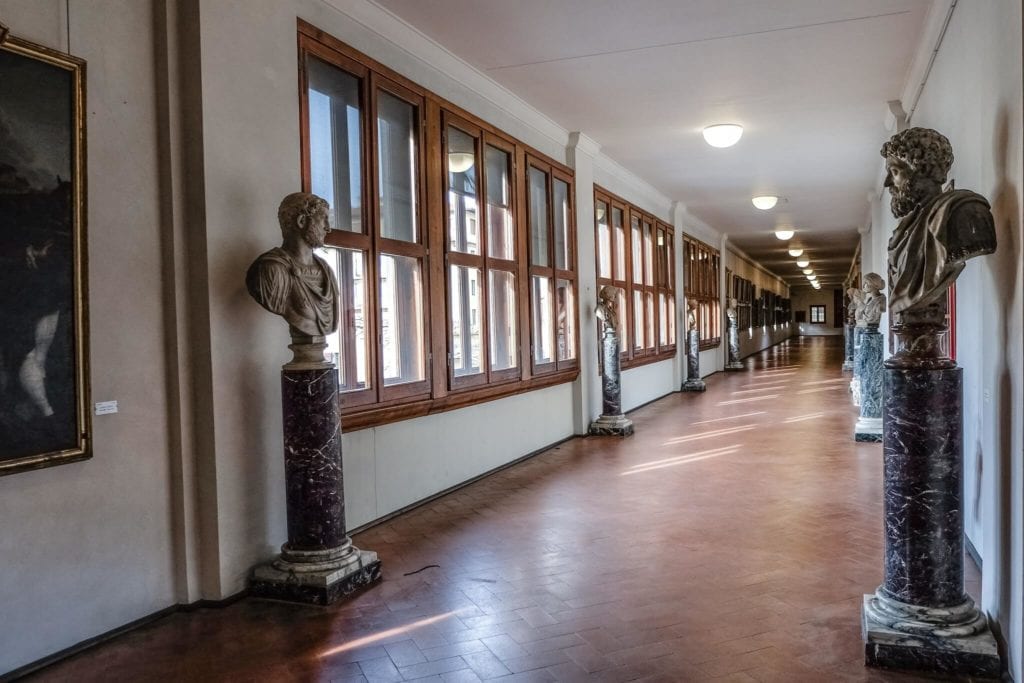
The Agreement between Medicis and the Lorenas
In the second room of the corridor, there is a painting of Anna Maria Luisa de Medici. We must say thanks to her if the city of Florence can show the entire world all its wonderful artworks. In 1737, she signed a “family agreement” with the new Dukes of Tuscany, the dynasty of Lorena. The agreement did not allow them to take any artwork, painting, statue, or library away from Florence. Can you image where the David might be displayed now without this arrangement?
The windows of the Corridor
Above the Ponte Vecchio, big panoramic windows offer a great view of the city. But in origin, they were not there. The light came only through small portholes that still exist. It was only in 1938 during Fascism, on the occasion of the official visit of Hitler to Florence, that Mussolini ordered the installation of these large windows. They needed to give the Fuhrer a wonderful view of Florence. It seems that Hitler liked the view very much that Ponte Vecchio was the only bridge in town to survive the bombs of the Second World War. Being the only connection between the northern and the southern part of Florence, in 1944 even the Partisans used the corridor to break the enemy’s line.
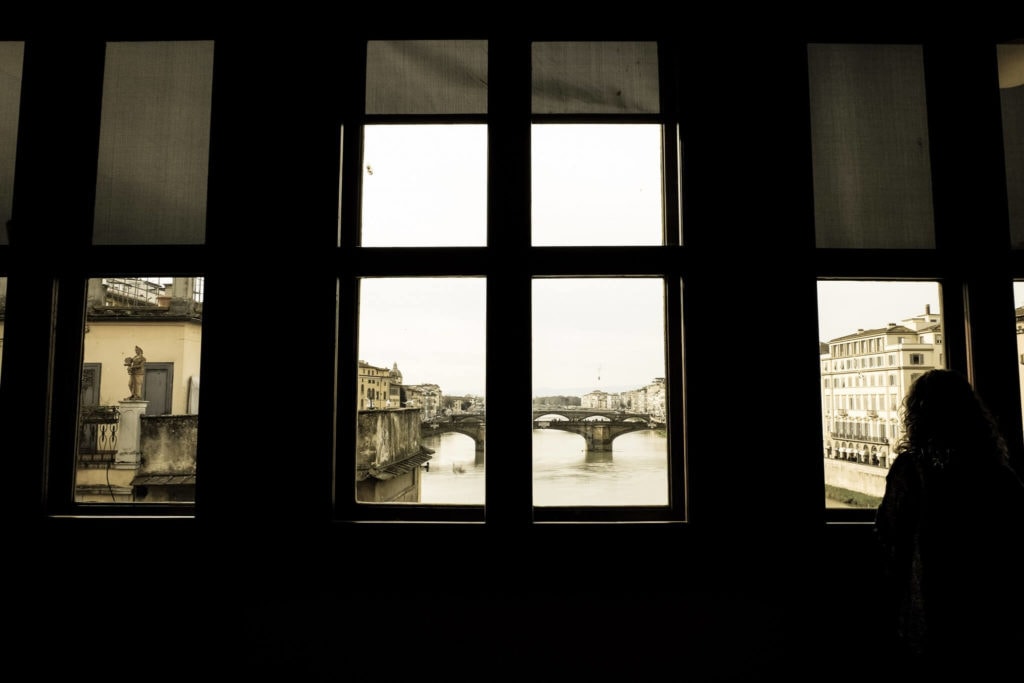
The Mafia bombing of 1993
Over the last century, a series of other unfortunate events happened to the Vasari Corridor. In 1966, a disastrous flood seriously damaged it. Then in 1993, the entrance of the Corridor and some paintings suffered heavy damages caused by the bombing of the Italian Mafia in the close Via dei Georgofili.
A secret way out into the Boboli Gardens
The visit lasted after only one hour into the Boboli Gardens. We came out from a small door next to the Buontalenti Grotto. It was sad to leave the secret path. I could have stayed for hours walking backward and forwards, enjoying the view from the big windows. And staring at the artworks imagining how life could have been at the time of the Medici Dynasty.
Related Posts about Florence
If you are planning your trip to Florence and you need tips and suggestions read also these other posts:
- 10 most important places in Florence
- 10 unusual things to do in Florence by our reader Mrs. Anne Harrison.
- The Basilica of Santa Croce
- The F-Lights Florence Light Festival
- The Splendor of Palazzo Borghese of Florence
- Good Friday in Florence, the Tuscan experience of our friend and reader Joe.
Pin It for Later!
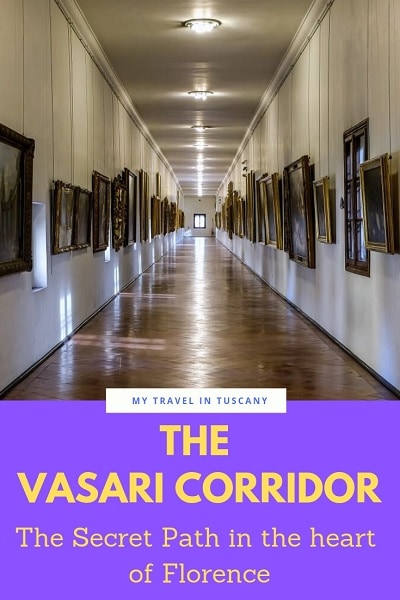

Hi when did you post this Every thing I am told is the Vasari corridor is not open although multiple sites and tour operators seem to indicate that it is What is the truth and who governs the veracity of information
Hi Jo, currently the corridor is not open. As I wrote in the article, it was scheduled to reopen in fall 2022. But it is still closed and there is no official news about reopening. The attraction is part of the Uffizi Museums and I think their website is the best source to consult for information about the Vasari Corridor.
What is the best tour company to contact to see the Vasari Corridor and the gardens and palace? Thank you.
Hi Maggie, the best thing to do is to refer to the Uffizi Museums where you get information and tickets for Uffizi, Pitti Palace and Boboli Gardens, and Vasari Corridor (when it will re-open because now it is closed).
Has the Vasari corridor opened yet (10/23) Is there any update?
Hi Kathleen, the corridor has not yet been reopened. and there is no news on a possible reopening date.